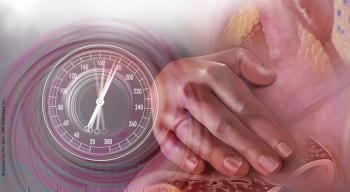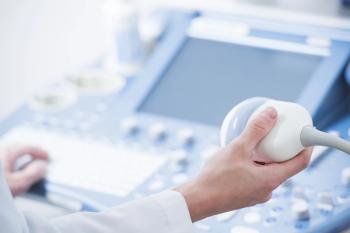
Altered maternal vaginal microbiota composition contributes to the pathophysiology of preterm birth (PTB), according to a study of two racially distinct cohorts of US pregnant women.

Altered maternal vaginal microbiota composition contributes to the pathophysiology of preterm birth (PTB), according to a study of two racially distinct cohorts of US pregnant women.

In cases of very preterm birth, waiting at least 2 minutes to clamp the umbilical cord, coupled with immediate neonatal care with the cord intact, improved outcomes, according to a multicenter study.

The first birth from a groundbreaking trial of in utero stem cell transplantation suggests that fetal therapy may be a viable new option for alpha thalassemia (ATM). Plus: Why do vasomotor symptoms bother some women long after menopause? Also: Does CPAP improve sexual QOL in women with sleep apnea?

Results of a UK study show that while intrauterine infection may contribute to preterm birth (PTB), a reproducible “preterm placental microbiome” does not exist. Plus: Depression in the male partner of couples being treated for infertility was linked to lower pregnancy chances, according to results of a recent study.

A recent study shows that mothers exposed to moderate to high levels of caffeine during pregnancy may give birth to infants that gain excess weight in early childhood. Plus: How does ART affect risk of stillbirth? Also: A study found that obese African-American women have significantly lower energy expenditure per kilogram of mass compared to obese white women with similar energy intake and physical activity levels.

Maternal chronic hepatitis B virus (HBV) infection is associated with a 16% increase in risk of preterm birth (PTB), with substantial heterogeneity, according to an updated systematic review and meta-analysis.

The fetal fibronectin (fFN) test alone had a sensitivity of 66.7% and a specificity of 97.2% in predicting spontaneous preterm birth (SPTB) in symptomatic twin pregnancies, according to a small pilot study of 40 women.

In 2012, a Virginia woman began receiving prenatal care for her seventh pregnancy, during which she was diagnosed with Type II diabetes and obesity. During the delivery, shoulder dystocia was encountered. The baby's right arm was noted to be limp and she was diagnosed with a brachial plexus injury. The woman sued those involved with the delivery, claiming that during the course of her care, the history, physical examinations, and tests showed she had an increased risk for encountering shoulder dystocia during a vaginal delivery.


Hypertensive disorders of pregnancy are among the leading contributors to maternal mortality worldwide. This review describes hypertension-related maternal mortality in the United States and key strategies to improve outcomes.


Cutting-edge medical advances and innovative technologies have made headlines and continue to flourish in the new millennium. However, these medical achievements stand in stark contrast to the paradoxical increase in US maternal mortality, which is among the highest of all developed nations.



Women with endometriosis at first singleton pregnancy are about 1.5 times more likely to have a preterm birth (PTB), according to a meta-analysis.

Data from more than 1.9 million subjects shows that women with endometriosis have a statistically higher risk of obstetric complications including preterm birth (PTB) than those without the condition.

Longitudinal data from a prospective cohort study indicate that being born early term may negatively affect a child’s cardiorespiratory fitness. Plus: Is there a difference in PTB rate between branded and compounded 17P? Also, a review analyzes whether or not there are any benefits to placentophagy.

A systematic review and meta-analysis suggests that in pregnancies conceived via assisted reproduction, risk of adverse perinatal outcomes may be higher with donated than with autologous oocytes. Plus: Do post-cesarean antibiotics reduce infections in obese women? Also: Researchers believe they have identified the genes associated with preterm delivery.

The plaintiff alleged that the infant’s injuries were caused by traumatic damage during delivery; specifically, from the vacuum extractor. The plaintiff’s argument was that when the vacuum extractor pulled on the infant’s head it caused damage, evidenced by the intraventricular bleed.

This article reviews complications that may occur following perineal trauma, techniques to help prevent these complications, and best practices for management using case vignettes.

Physiologic changes during pregnancy affect the body’s hormonal milieu as well as a woman’s sexual desires, responses, and practices. In this review, we discuss knowledge gaps, the physiology of the female sexual response during pregnancy, types of sexual activity during pregnancy, and existing literature on anatomic and physiologic changes by trimester and postpartum.

PTB can be readily separated into spontaneous and indicated PTB, and, thus, treatment or prevention for one might be counterproductive for the other.

A new study looks at whether midpelvic operative deliveries have greater trauma than other delivery forms. Plus: A look at the long-term effects of using bisphosphonates. Also, is lithium use in early pregnancy as dangerous as previously thought?

The latest on testing guidelines for Zika from the CDC. Plus: Are corticosteroids effective when administered only hours before delivery? Also, a look at the prevalence of hepatitis C among pregnancy women in the United States.

A round-up of research on obesity in pregnancy from the ACOG 2017 meeting in San Diego, California.